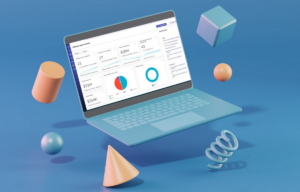As cloud adoption continues to surge, businesses face increasing pressure to effectively manage and optimize their cloud expenses. Enter FinOps is a cultural and financial management practice bridging the gap between finance, operations, and technology. This approach enables organizations to maximize cloud investments by fostering collaboration, enhancing visibility, and driving cost-efficient practices. In this blog post, we will explore the critical role of FinOps in cloud cost management and how it can transform your organization’s approach to cloud financial operations.
Understanding FinOps
FinOps, short for Financial Operations, is a set of practices and principles designed to bring financial accountability to the cloud computing variable spend model. It aims to align the objectives of finance, DevOps, and business teams, ensuring that cloud resources are used efficiently and effectively to meet organizational goals.
Critical components of FinOps include:
- Collaboration: Promoting a culture where finance, operations, and technology teams work together to manage cloud costs.
- Visibility: Providing detailed insights into cloud spending to help teams make informed decisions.
- Optimization: Continuously identifying and implementing cost-saving opportunities without compromising performance.
Challenges Addressed by FinOps
FinOps addresses several challenges that organizations face in cloud cost management:
- Lack of Cost Visibility: Many organizations struggle to understand their cloud expenses clearly. FinOps provides detailed visibility into where money is spent, allowing teams to identify and address inefficiencies.
- Budget Overruns: Cloud costs can quickly exceed budgets without proper financial management. FinOps helps forecast and control spending, reducing the risk of budget overruns.
- Resource Waste: Inefficient use of cloud resources can lead to significant waste. FinOps practices help identify and eliminate unused or underutilized resources.
The Core Principles of FinOps
FinOps is built on three core principles that guide organizations in managing their cloud costs effectively:
1. Teams Need to Collaborate:
- Encourage cross-functional teams to work together to manage cloud spending.
- Foster a culture of shared responsibility and accountability for cloud costs.
2. Decentralized Control with Centralized Visibility:
- Allow individual teams to make informed decisions about their cloud usage.
- Provide a centralized platform for tracking and analyzing cloud costs, ensuring transparency across the organization.
3. Everyone Takes Ownership of Their Cloud Usage:
- Empower teams to take responsibility for their cloud spending.
- Implement chargeback or showback models to allocate costs to the respective teams, promoting accountability.
Implementing FinOps in Your Organization
To successfully implement FinOps, organizations need to follow a structured approach:
1. Establish a FinOps Team:
- Form a dedicated team comprising members from finance, operations, and technology departments.
- Assign roles and responsibilities to ensure effective collaboration and communication.
2. Adopt FinOps Tools and Technologies:
- Leverage cloud cost management tools to gain detailed insights into cloud spending.
- Use automation tools to enforce cost-saving policies and optimize resource usage.
3. Develop a FinOps Framework:
- Create a framework that outlines the processes, policies, and best practices for managing cloud costs.
- Define key performance indicators (KPIs) to measure the success of your FinOps initiatives.
4. Promote Continuous Improvement:
- Encourage a culture of continuous improvement by regularly reviewing and optimizing cloud usage.
- Conduct training sessions and workshops to update teams on the latest FinOps practices and tools.
Benefits of FinOps
Implementing FinOps in Your Organization
- Cost Savings: Organizations can achieve significant cost savings by optimizing cloud usage and eliminating waste.
- Improved Financial Accountability: FinOps fosters a culture of accountability, ensuring that teams take ownership of their cloud spending.
- Enhanced Decision-Making: With detailed visibility into cloud costs, teams can make more informed decisions about cloud usage.
- Operational Efficiency: FinOps helps streamline cloud financial operations by promoting collaboration and automation.
Conclusion
FinOps is a transformative approach to cloud cost management that empowers organizations to maximize the value of their cloud investments. FinOps enables businesses to manage their cloud expenses effectively and achieve their financial objectives by fostering collaboration, enhancing visibility, and driving cost-efficient practices.
At MetrixData 360, we understand the importance of effective cloud cost management. Our solution Lucidity is designed to help organizations implement FinOps practices and optimize their cloud spending.
Contact us today to learn how we can support your FinOps journey and drive financial success in your cloud operations.

Microsoft 365 vs Office 365 in 2025: What’s the Difference?
Let’s clear something up, because the confusion still lingers, even in 2025. I’ve sat in more than a few boardrooms where IT and procurement teams

CIO Chronicles: Challenging Our Microsoft Renewal
“I wish we had internal data to challenge Microsoft’s numbers instead of relying on their narrative.” That thought echoed in my mind as I stared

ServiceNow SAM Pro Implementation: Success Strategies
Successful ServiceNow SAM Pro implementation can fail to deliver real value if not done correctly. ServiceNow’s SAM Pro module promises to streamline software asset management,




 Why Keeping a Bad Sales Rep Could Cost You
Why Keeping a Bad Sales Rep Could Cost You



 Bonus: Leverage data to your advantage
Bonus: Leverage data to your advantage


